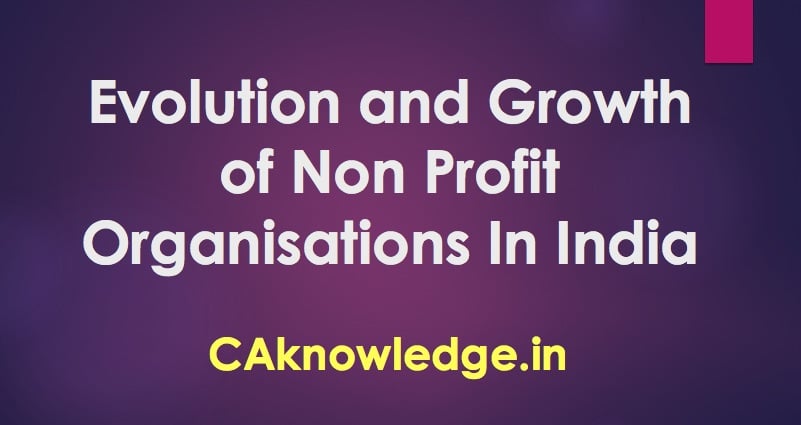The word “charity” entered the English language through the Old French word “charité” which was derived from the Latin word “caritas”. Originally in Latin the word caritas meant preciousness, dearness, high price. From this, in Christian theology, caritas became the standard Latin translation for the Greek word agape, meaning an unlimited loving-kindness to all others, such as the love of God. Agape was not primarily about good works and giving to the poor, although in English the word ‘charity’ has steadily acquired this as its primary meaning, wherein it was first used in Old French at least since the year 1200 A.D.
Evolution and Growth of Non Profit Organisations In India
Though the roots of charity are to be found in religious belief and practice, charitable trusts and voluntary organizations are India’s secular and institutional manifestation. India has a long history of civil society. Voluntary organizations were active in cultural promotion, education, health, and natural disaster relief as early as the medieval era. Religious organizations also took up work to help the poor to improve their condition. Towards the end of the 19th century the corporate community in India also began setting up organizations dedicated to the welfare and development of the underprivileged and a large number of Corporate Trusts and Societies came into existence. During the 19th and early 20th century these voluntary organizations received legal recognition as the Government enacted various laws such as the Societies Registration Act of 1860, The Religious Endowments Act of 1863, The Indian Trusts Act of 1882 and the Charitable Endowments Act of 1890. Such enactments gave public recognition to the intention of the founders and extended the protection of the law to their income and property, however these enactments were rather mild and did not impose strong regulatory controls. The British Government later added two more legislations i.e. the Charitable and Religious Trusts Act, 1920 and (ii) the Trade Unions Act, 1926. The Income Tax had been introduced in 1860, and in 1922, the government granted 50% tax exemption to individuals on donations for charitable purposes. The Government of independent India continued and extended the tax concessions given earlier only to individuals, to companies making charitable contributions. The Income Tax Act of 1961 further broadened the definition of charitable purpose. Section 2(15) of the Act defines the expression “charitable purpose”. All Charitable organizations may exist as non-profit companies, societies or trusts. However, structure or management is not the essence of the charitable organization. It is the objectives, which distinguish a charitable organization from a business organization. Recommended Articles
Meaning of NPO (Non Profit Organisation)Taxation of Charitable TrustTransfer PricingMajor Highlights Budget 2017PAN Card Application for Charitable TrustCharitable Trust Introduction and RegistrationRegistration of Section 8 Company Corpus Fund PAN CardList of All Incomes Exempted from Income Tax
Author – Dr. Rajkumar Adukia If you have any suggestion regarding “Evolution and Growth of Non Profit Organisations In India” then please tell us via below comment box….
